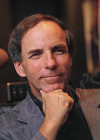HOME | ABOUT US | MEDIA KIT | CONTACT US | INQUIRE
HOME | ABOUT US | MEDIA KIT | CONTACT US | INQUIRE
If you’ll dig a little deeper into the K-12 value proposition, you’ll get an education—of the eye-opening variety.

Over the years, I have had the chance to speak to local Rotarians, Cosmopolitans, Legionnaires, Zenith Boosters, Knights of Columbus, Chambers of Commerce, Tea Parties, Sunflowers, Pachyderms, Lions, Tigers and Bears, Oh My!
Over the years, everywhere I have gone—from Paola to Plattsburg, from Ottawa to Warrensburg—local activists have expressed qualms about public education in general, but they have insisted that the public schools in their burg are excellent.
These schools are never just “OK” or “pretty good” or “fair-to-middling.” No, they are “excellent.” As to the students, they are even smarter than the famously “above average” children of Lake Wobegon. They may not know who fought in the Civil War and they may need a calculator to do their multiplication tables, but they all rank in the top x-percent of some important test or another.
The one exception to this rule, of course, is Kansas City, Mo. Kansas City residents have accumulated a good deal of hard-earned humility about local public education, but even they like to deceive themselves into thinking their schools are “improving” or “coming back” or “on the upswing.” Spoiler alert: They are not.
In Kansas, more so than in Missouri, citizens obsess about public education. Unlike in KCMO, where locals just hope the schools gets accredited, Kansans want their schools to be recognized, acknowledged, honored.
The only obstacle in the minds of many is money. Activists believe that if their schools just had a little more of it, little Jacob and Emily would be winning Nobel Prizes before they graduated—well, at least if Nobel gave out “participation” awards.
Not likely. The Kansas Department of Education has been tracking student achievement, such as it is, for quite some time. One of the more reliable tools is the National Assessment of Educational Progress. Another is the ACT, originally “American College Testing.” The results of these tests are not exactly encouraging.
As to the ACT, less than 30 percent of those taking the test in Kansas are thought to be ready for college in English, reading, math and science. The NAEP results are even more depressing.
Two decades ago, 34 percent of Kansas fourth-graders tested “proficient” in reading on the NAEP. Eighth-graders did not do much better; 36 percent of them tested proficient in reading by NAEP standards in 1998.
Over the next 17 years, school funding increased at a rate 28 percent above inflation. A citizen who expected a comparable improvement in performance would be disappointed. In 2015, only 35 percent of fourth-graders tested proficient in reading, a 1 percent increase, while 35 percent of eighth-graders tested proficient, a 1 percent decrease.
If student performance has flatlined, readers may be shocked to learn that costs have not. For the last seven years at least, the media have been assuring Kansans that the recently departed Sam Brownback and his miserly crew of henchmen (and henchwomen) have slowly starved the Kansas public education establishment of its needed millions—or billions.
Not true. In 2005, the cost per pupil in Kansas public schools was $9,707. In 2017, it was $13,237. Allowing for inflation, the 2017 figure represents an 8 percent real dollar increase during a 12-year period that included at least two years of recession-induced retrenchment and five years of Brownback’s imaginary spending cuts.
Indeed, when I Google the three words “Brownback,” “slash,” and “education,” I get more than 2.5 million hits and headlines such as “Barely Alive, Kansas Public Schools on the Verge of Brownback’s Death Blow” from PoliticsUSA and “Education Is Newest Target of Kansas Budget Cuts” from The New York Times.
Consider this sentence from a separate 2014 article in The Times: “Gov. Sam Brownback and the Republican-led Legislature have made draconian cuts in school spending, leading to a lawsuit that now sits before the state Supreme Court.”
In truth, there has been no slashing, no cutting, hardly even a nick. The funding and testing numbers are widely accessible. For those that are curious, the Kansas Policy Institute does an excellent job of collecting the data. There is little mystery about the numbers, but in today’s post-modern journalism, “narrative” trumps numbers (and, yes, “love trumps hate.”) Can news really be this fake? Yes, Virginia, it can be.
If the dollars are being spent, but the students aren’t getting smarter, the taxpayer has to wonder where his money has been going. A look at school district employment from 1993 to 2017 holds some answers.
In that 24-year period, the number of full-time students in Kansas public schools increased 7 percent. The number of teachers increased 16 percent. This would seem to be a useful investment.
What has not been particularly useful is the growth during this same period in managers and other non-teachers. The managerial group increased its numbers by 33 percent during those 24 years and the non-teachers grew by 39 percent. When last I checked, some 255 of these managers and administrators in Johnson County alone were getting paid more than the governor’s $99k.
The scary thing is that the Kansas Supreme Court may coerce the Legis-lature to pump more money into the schools, so much more in fact that even The New York Times won’t be able to call it a “cut.”
If the attorneys for the Kansas Board of Education get their way, the per-pupil spending in fiscal year 2019 will increase to $16,800—a 27 percent increase over 2017 numbers. School attorney Alan Rupe recently crowed that other functions of the state “may have to suffer” so the education lobby can get what it wants.
And even if Rupe and pals succeed, Jacob and Emily still won’t know who won the Civil War. Hell, they probably won’t even know who fought it.
Leave a Reply